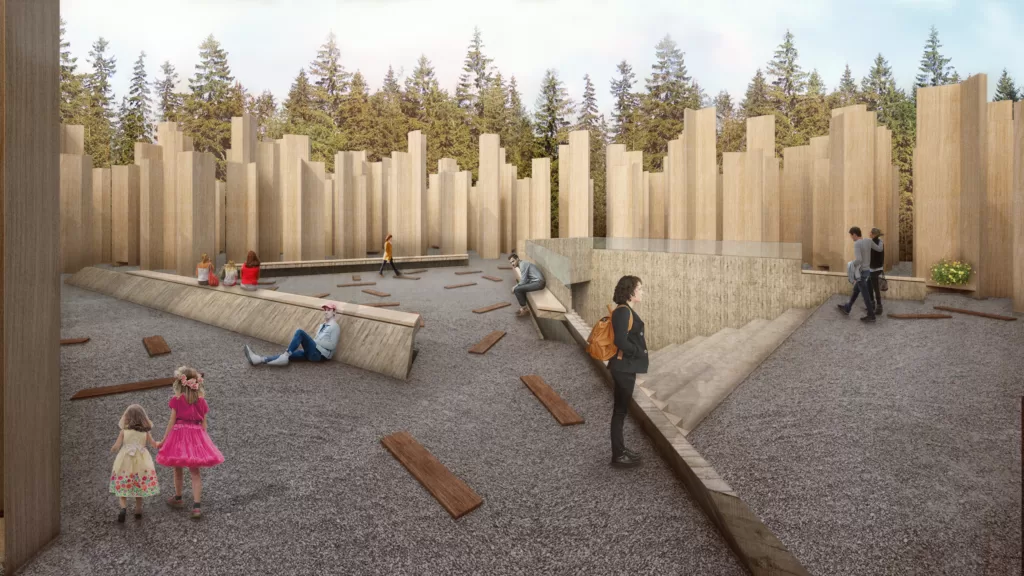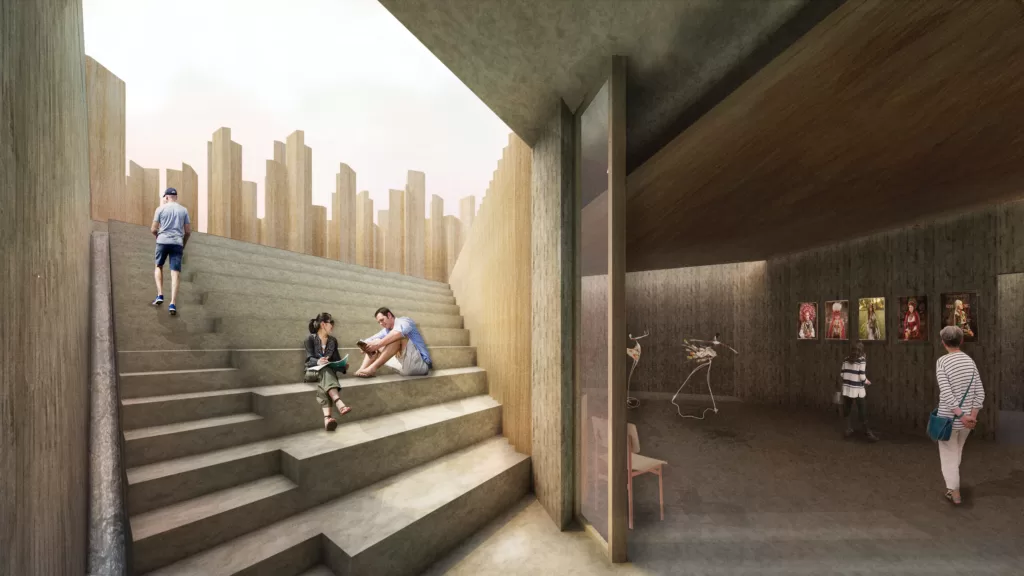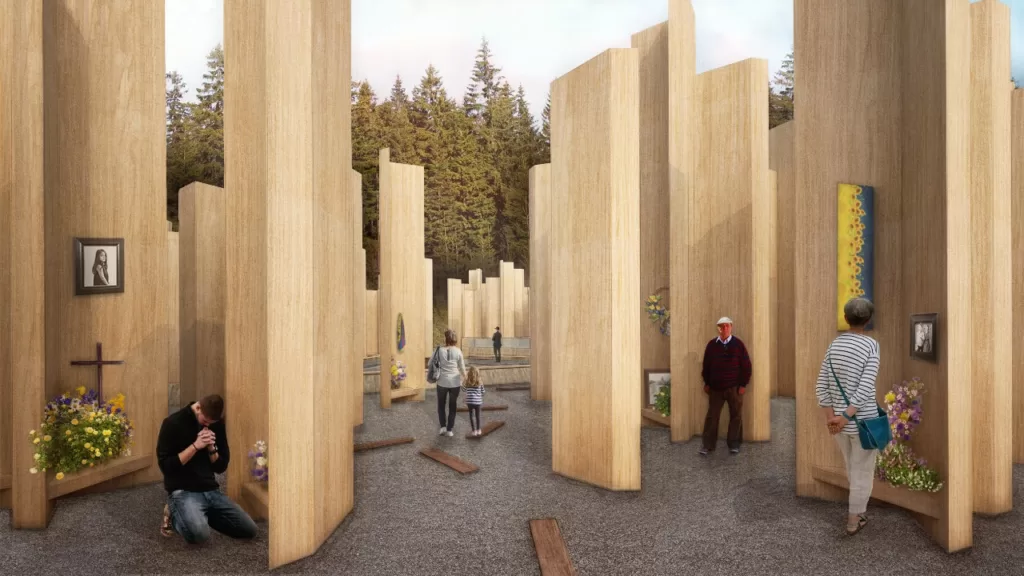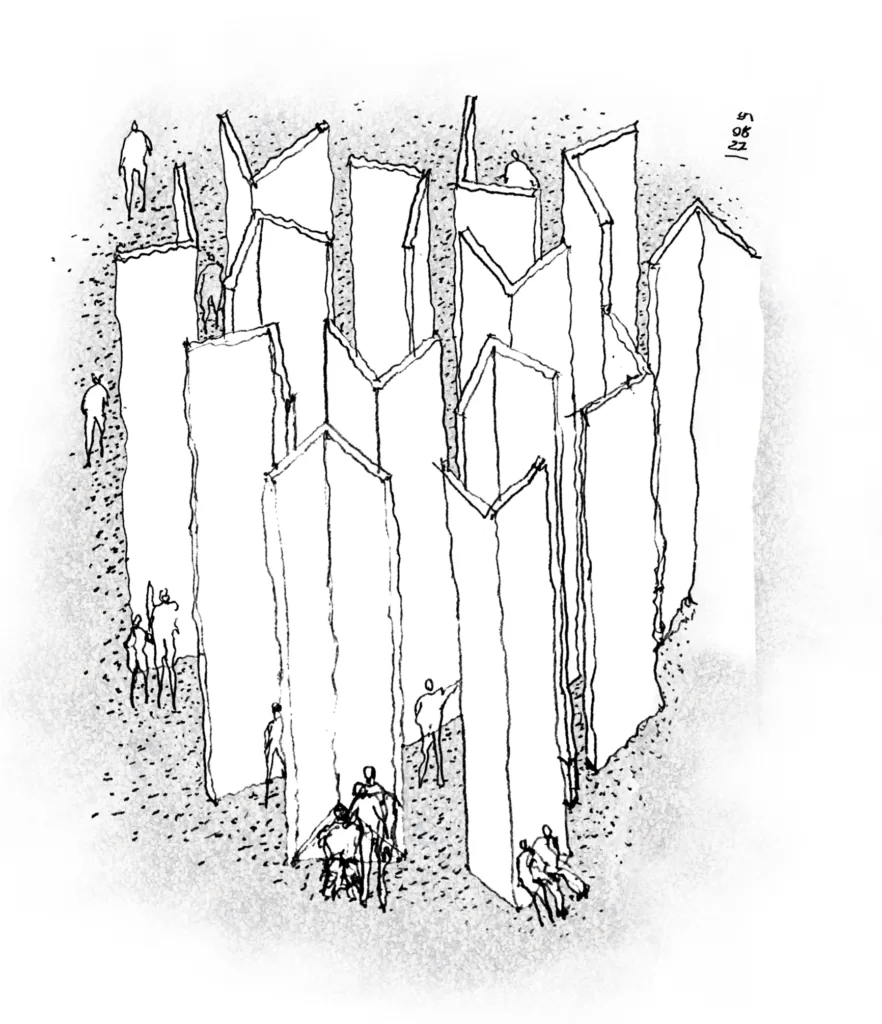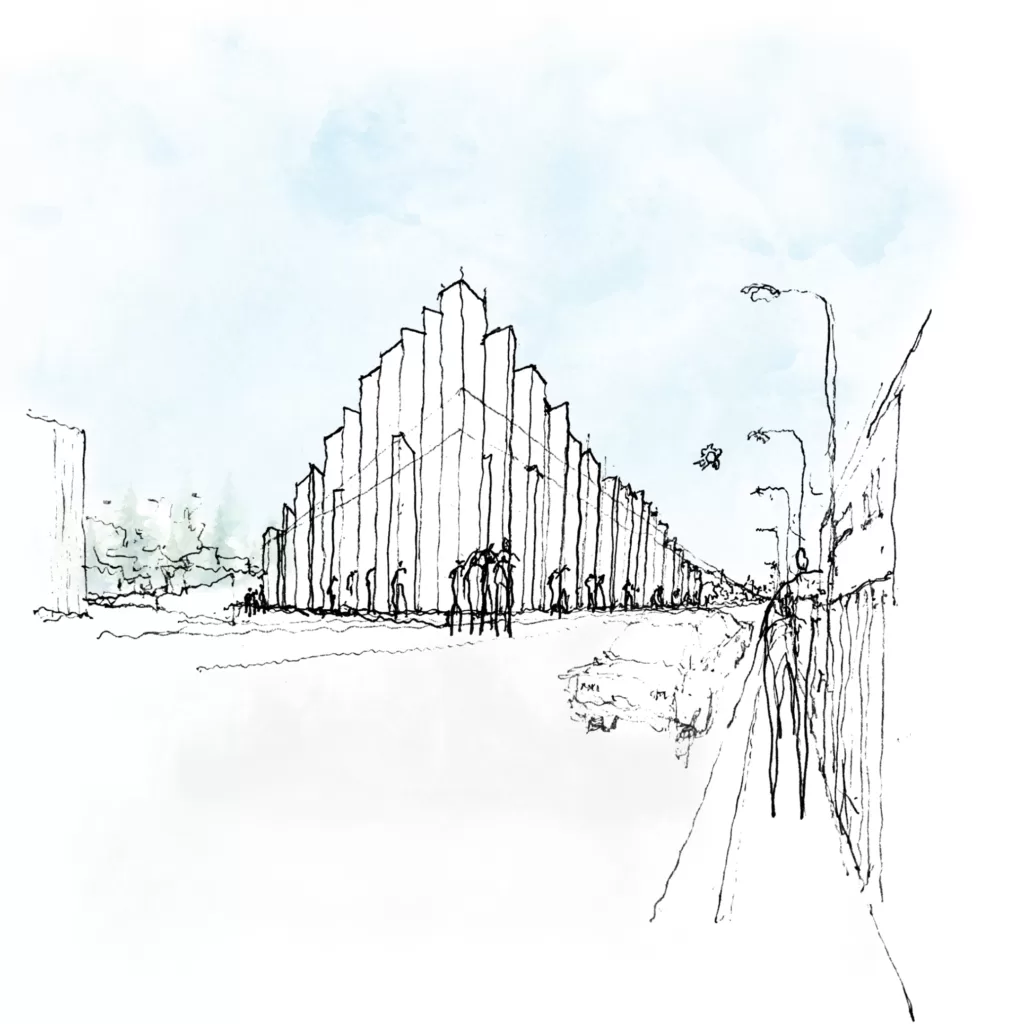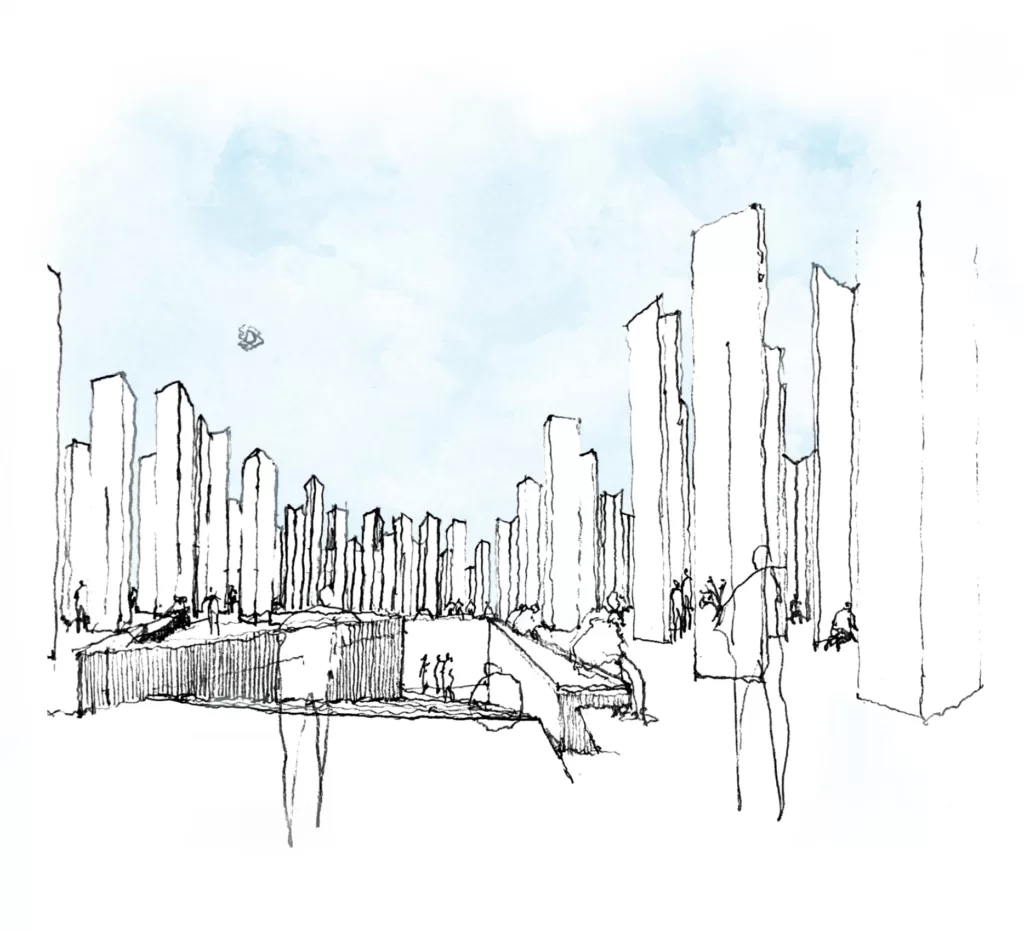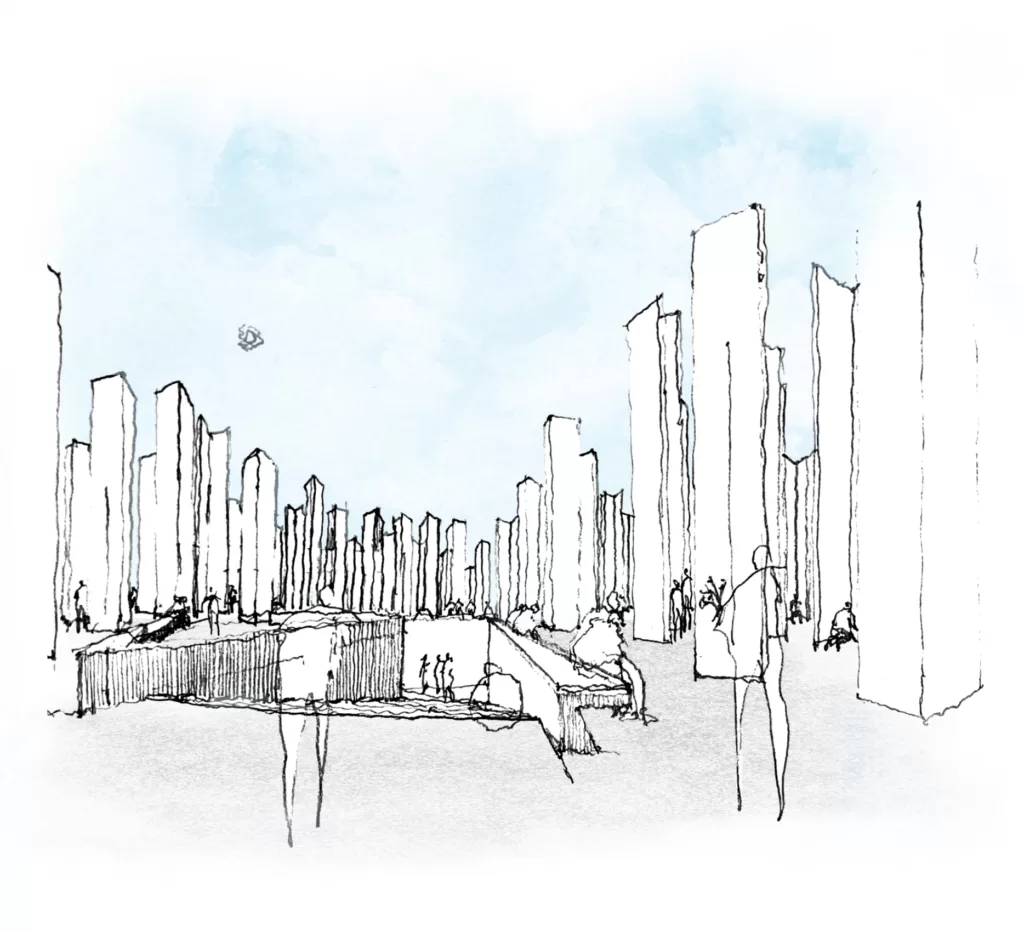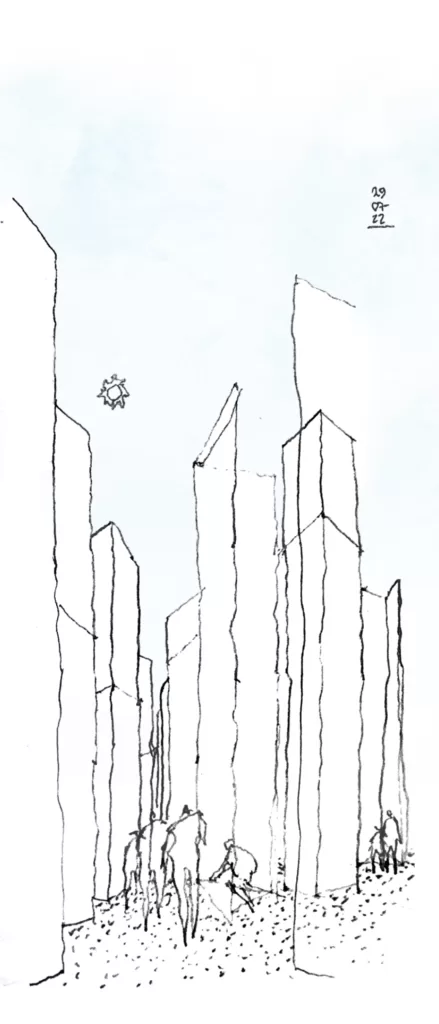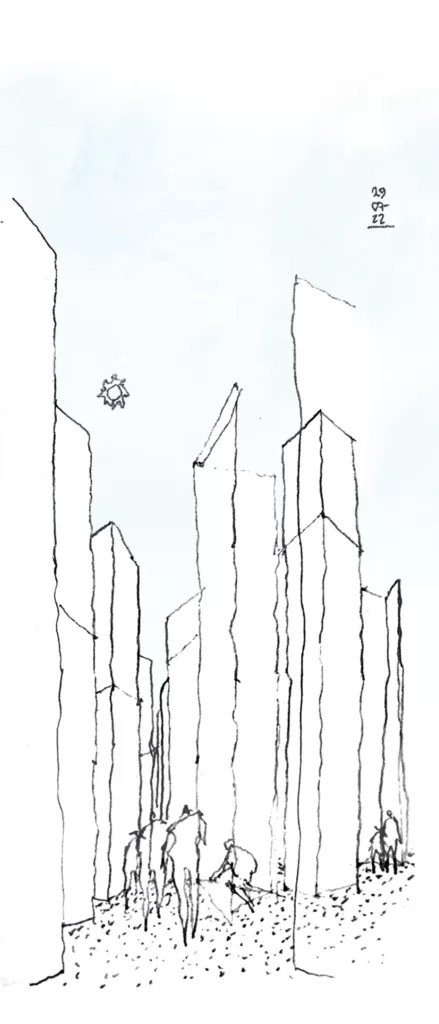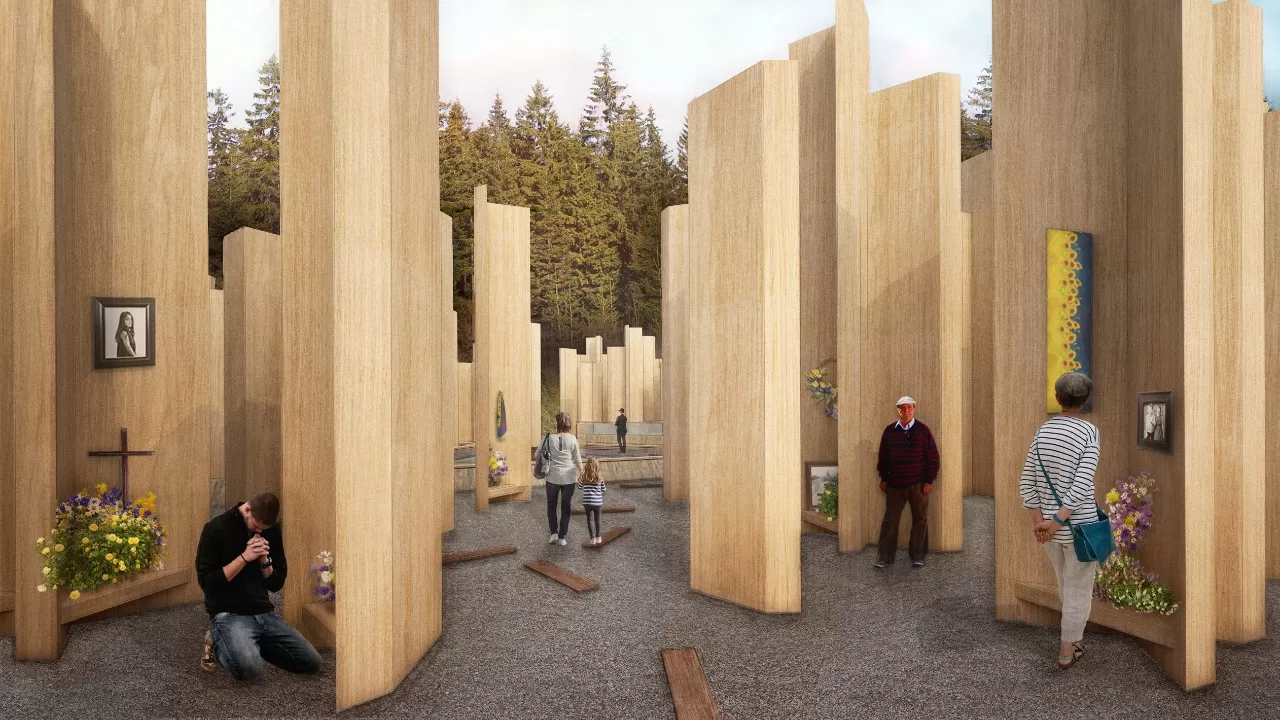Considered the strategic critical point of resistance of the City of Irpin, the Soborna Street Bridge, which connects Irpin with the Bucha Neighborhood, was destroyed, and on this battlefront, which established a house-to-house, wall-to-wall defense , was the scene of a bloody massacre of civilians, where on March 6, 2022, between 9:30 a.m. and 2:00 p.m., 279 civilians died, mainly the elderly, women, and 50 girls and boys. This tragedy is called “the Irpin and Bucha Massacre”.
The commission from the Irpin authorities was very clear: the Memorial must be an artistic, modern, sensitive work that allows the construction of a space for remembrance and memory, gathering relevant aspects of the Irpin community and landscape.
Life and Nature
One of the omnipresent elements in all the landscapes surrounding the City of Irpin, is the presence of forests of trees with thin trunks, very straight, tall and leafy crown only at the top.
They are real sticks that build the forest landscape. In the rapid expansion of the Irpin Cemetery, as a result of the slaughter, space had to be taken up from the forest massif, leaving the horizon of these natural sticks as the surrounding landscape.
Each of these tall and slender trees stand everywhere as a sign of life and nature.
The Irpin and Bucha rivers, which contain the city, form and feed small lagoons and lakes in their courses, which in a complementary way form a natural landscape characteristic of this area.
This is a first image of the project, from life and nature: a forest, a multitude of trees; a space to inhabit the memory and remembrance of life and nature.
Death and Violence
A second element, which is relevant to account for any strategy, is the image of the physical damage produced by the mortar bombs and their shock wave of incandescent metal shrapnel, which has left its mark of destruction and death in most buildings and infrastructure that was damaged and destroyed, but especially the power to generate death that it had in the massacre of civilians in Irpin and Bucha.
Every wall, every house, every building, every street, every bridge, poles, furniture, and trees in public and private space, sadly testify to its impact.
This is the second image of the project, from violence and death: the physical scene of the damage caused by a mortar shell, a crater, and its shock wave of deadly shrapnel; an indelible space to inhabit the memory of violence and death.
Architecture proposal
A forest of tree-shards to host 279 altars
Our architectural project proposes, for this Memorial space, the construction of a new landscape that dialogues and is part of the natural landscape of Irpin: on the one hand and from an elevation perspective, we propose the generation of a forest of 279 trees-wooden- vertical-structures that, in their capacity as a sign and symbol of this fusion between nature/life.
And on the other hand, the violence/death, is expressed in plant as these trees outline the contour of a mortar bomb that assume the idea of the shard, and between which small spaces and random paths are generated, enabling a special space of commemoration, bringing to presence the absence, to celebrate the memory and the remembrance of the 279 victims killed by the Russian army in its attempted assault on Irpin and Bucha: the construction of a Forest of Trees-Shrapnel’s.
Each one of them will be built through tall and slender self-supporting laminated wooden beams of different heights ranging between 4 and 6 meters, to signify that in this massacre were killed children, young people, adults, and the elderly.
In the corners of intersection and meeting of each of the structures of the Trees-Shrapnel’s, will be constituted the Individual Altars, which will allow relatives and friends to celebrate the memory and remembrance of each of the victims of the massacre. This interior altar-space in the shape of an angle, builds the possibility of taking shelter in a different way in the trunks of this new forest.
The floor of this Forest of Trees-Shrapnel will be made of crushed quarry stone gravel, which will allow to mark, through sound, subtly the step when walking, producing an immediately perceptible difference between exterior and interior, when entering the space of the Memorial, intending a change of rhythm, attitude, and disposition of the visitor at the moment of his entrance. Building a new rubble floor with this gravel.
In this way, all these materials build a minimalist space from a learned austerity.
A void clearing in the forest for the Refuge of Memory.
Each one of these tree-shards will form in the centers of their structures, individual and intimate altars of remembrance, reflection, and prayer for each one of these victims.
These trees/shards will be arranged randomly, building a shockwave from an empty central space, the Memory Square, where, through a staircase/access gallery, it builds a wound in the earth, recalling the crater of the explosion of the mortar ammunition and, at the same time, the ditch of an open mass grave, which shows the world the content of death that they wanted to hide.
It is thus the project reveals and tells the history of its city, taking charge of the wound it bears by means of a trace that represents pain, permanence, but at the same time, healing, and hope.
Through this opening in the land, the Refuge of Memory is accessed; a small museum space for the exhibition of graphic material and information about its victims and what happened in this tragedy, to prevent its oblivion and create awareness so that it never happens again.
